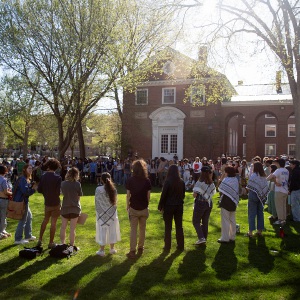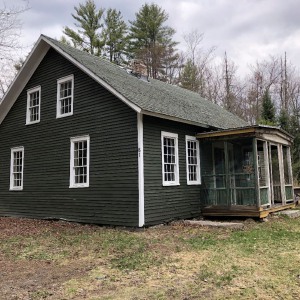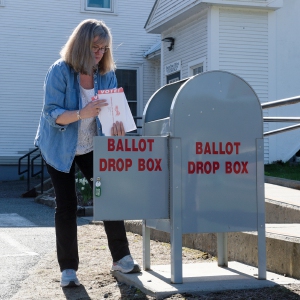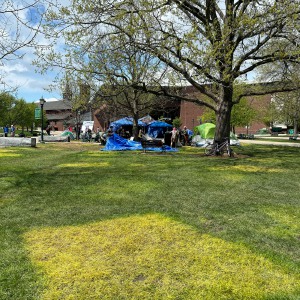Search and rescue volunteers answer call during wilderness emergencies
| Published: 05-15-2023 10:06 AM |
LYME — On a late November morning last year, a sophomore college student from Massachusetts set off on a winter hike in the White Mountains. When Emily Sotelo didn’t return as planned, her mother called New Hampshire Fish & Game, which has jurisdiction over missing hikers in the state.
After clearing all the relevant trails and finding no trace of Sotelo, Fish & Game called in the volunteer-run Upper Valley Wilderness Response Team.
The New Hampshire National Guard flew UVWRT members, along with other area search and rescue groups including the Pemigewasset Valley Team, up to Franconia Ridge in Black Hawk helicopters. From there, the responders were deployed to different areas on the mountainside, most heading off trail down into ravines.
UVWRT, which joins a sprawling network of similar teams, helps to cover all of Vermont and New Hampshire, and plays a critical role in supporting law enforcement. The Hanover-based nonprofit group aids in fixed-point rescues — which are like extraction missions — “but the big portion of what we do and train on is actual searching,” said UVWRT Vice President Tom Frawley, of Lyme.
The team fields as many as 50 emergency calls a year and takes on more than outdoor recreation emergencies. They’re deployed to locate people with dementia that are lost or to track down individuals thought to be at risk of suicide.
As with each mission, UVWRT scoured “every square inch” from the “point last seen” out looking for Sotelo.
“When a person becomes hypothermic, their brain function starts to fail, they start to do pretty erratic things and they’re not typically going to be on a trail,” Frawley said.
After a three-day search in frigid temperatures, Sotelo was found dead on the southwest side of Mount Lafayette, on what would have been her 20th birthday.
Article continues after...
Yesterday's Most Read Articles
 Dartmouth administration faces fierce criticism over protest arrests
Dartmouth administration faces fierce criticism over protest arrests
 Hanover house added to New Hampshire Register of Historic Places
Hanover house added to New Hampshire Register of Historic Places
 Sharon voters turn back proposal to renovate school
Sharon voters turn back proposal to renovate school
■
Dave Targan manages Monadnock State Park in southern New Hampshire, and is on familiar terms with UVWRT.
Targan described an influx of people interested in the outdoors moving into the Twin States and the surrounding areas over the last few years.
“There’s more search and rescue for that reason,” Targan said.
In 2022, New Hampshire Fish and Game spent more than $500,000 on rescues, up from just under $200,000 in 2013. The financial strain on the state’s resources has made nonprofit groups like UVWRT all the more important.
Targan recommends purchasing a New Hampshire “Hike Safe Card” from Fish and Game, which goes for $25 a person and $35 per family. The card is like insurance: Cardholders, unless found to be negligent, don’t have to pay rescue costs if they find themselves in need of help. It also comes with a list of advice, the last bullet point of which Targan thinks is the most important.
“It says, ‘Don’t expect a rescue,’ ” he said. “That cuts down on the expectation that there will be someone there to save them.”
Frawley, who’s been on the team for 14 years, owns gas stations and convenience stores across New England. Like many of his fellow volunteers, Frawley’s search and rescue work stands in sharp contrast to his day job.
When answering search calls from law enforcement in Vermont, the group is dispatched by the state police. The UVWRT sends a pre-recorded voice message out to active team members alerting them of the search and polling them on their availability.
Members of the team are on call 24/7, and accepting a job could send them hours from their home to begin a rescue attempt that could then last days.
“There’s a level of dedication to these volunteers that’s different from other volunteer groups,” he said. “The high turnover rate and the amount of recruiting effort to putting in new members, it speaks to the really difficult work that it is.”
Having completed her training last month, Megan Maville, a paraeducator at the Enfield Village School, is one of the team’s newest members.
“Not only am I learning a way to give back to my community, but I’m gaining all of these practical skills for myself,” she said.
Out of the 43 participants that set out at the beginning of training, only 19 “graduated” and joined UVWRT this year. That’s the highest retention rate since the program began in 1995, Frawley said.
“There are people from all walks of life on this team,” said Eric Lindgren, of New London.
Lindgren does private equity work in Manhattan, and has been on the search and rescue team for six years.
“You’re outdoors and getting good exercise,” he said. “It’s stuff you’d want to do on a weekend anyway.”
■
During a training session last month, about a dozen UVWRT members methodically fanned out in a dense forest on the edge of a swamp. Those on the north end of the line drew the shortest stick: They had to fight through pines so thick, they could only see a few feet in front of them.
The group embarks on their missions with heavy backpacks, lugging the supplies needed to aid someone in need of acute medical attention and to allow the searchers to spend extended time in the elements themselves.
“When you think about making the personal decision about joining this team, you have to talk to everyone in your world — your friends, your family, significant other, employer,” Frawley said. “They have to understand what you’re jumping into, and they have to sort of jump with you.”
The going was tough, but morale was lighthearted. They were only looking for a Chevy baseball cap and a blue Carhartt sweatshirt, clues planted for a practice search the day before.
Patrick Brassfield, enlisted by Frawley, his father-in-law, to play decoy, had spent hours the previous night hiding for the team on the Green Woodlands property, which covers more than 20,000 acres across Lyme, Dorchester, Orford and Wentworth.
Brassfield was given a pair of coordinates and wandered off in their general direction.
Then the team did what it does best: They found him.
Frances Mize is a Report for America corps member. She can be reached at fmize@vnews.com or 603-727-3242.

 Students take down pro-Palestinian encampment at UVM
Students take down pro-Palestinian encampment at UVM
